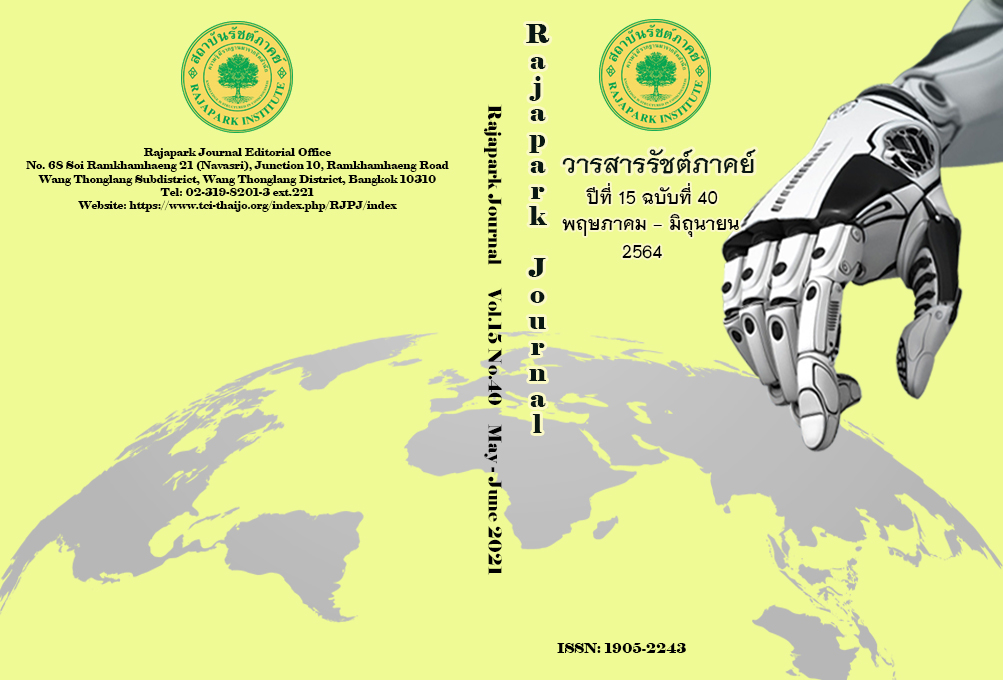The Copyright Infringement Exception on Publicly Displayed Sculptural Works, According to The Copyright Act of 1994, Analyzed in Being Compared with The Japanese Copyright Law
Main Article Content
Abstract
Concerning the Copyright infringement exception on publicly displayed sculptural works, as according to the Copyright Act of 1994, Article 37, the public are allowed to reproduce the sculptural works, which are located in public places, without being considered an infringement of the copyright owner of the sculpture. However, the aforesaid exception does not specify the scope of use of the work resulting from the reproduction. The public may therefore use the work in the same manner as the original sculpture. Commercial use also are allowed without considering that the act is contrary to the normal exploitation of the copyright owner's work, or affects the lawful rights of the copyright owner. It is not considered unfair to the owner of the copyright, or inconsistent with the Berne Convention on the Protection of Literary and Fine Arts. This is unlike the Japanese Copyright Law that prohibits the use of such exempt works for the same purpose as the original sculpture and is not permitted for commercial purposes. The proposal of this research is therefore to confirm that the Copyright Act of 1994 should define the scope of use of the reproduced work under the Article 37 must not be used for the same purpose as the original work, and must not be used for commercial purposes as well. This is to maintain the right balance between the copyright owner and the public's rights.
Article Details
Views and opinions appearing in the Journal it is the responsibility of the author of the article, and does not constitute the view and responsibility of the editorial team.
References
Barrett, J. (2018). Putting Artists and Guardians of Indigenous Works First: Towards a Restricted Scope of Freedom of Panorama in the Asian Pacific Region, In book: Making Copyright Work for the Asian Pacific: Juxtaposing Harmonisation with Flexibility. Pp. 229-255.
Chang, Y. (2009). Dabates on Introduction of “Fair use” to the Copyright Act of Japan and Korea. Do Japan and Korea need Fair use?. Comparative IP Academic Workshop 2009, 282-297.
Gillian, D. (2002). Copyright and the Public Interest. London: Sweet & Maxwell.
Khaosaeng, K. (2018). Copyright Exceptions for User-Generated Content: Comparative Analysis of Copyright Law in Canada and Thailand. Thammasat Law Journal, 47(2), 330-349.
Netayasupha, A., & Areewittayalert, C. (2015). Explanation of Copyright Law (2nd ed.). Bangkok: Winyuchon.
Panuspatthna, O. (2014). Explanation of Copyright Law. Bangkok: Chulalongkorn University.
Phillips, J., & Firth, A. (1995). Introduction to Intellectual Property Law (3rd ed.). London, Butterworths.
Phommahitathorn, S. (1995). Intellectual Property law: Copyright (2nd ed.). Bangkok: Winyuchon.
Pinyosinwat, J., & Butr-indr, B. (2018). Histrory and Concept of Intellectual Property (2nd ed.). Faculty of Law, Thammasat University.
Stewart, S. M. (1983). International Copyright and Neighbouring Rights. London, Butterworths.


